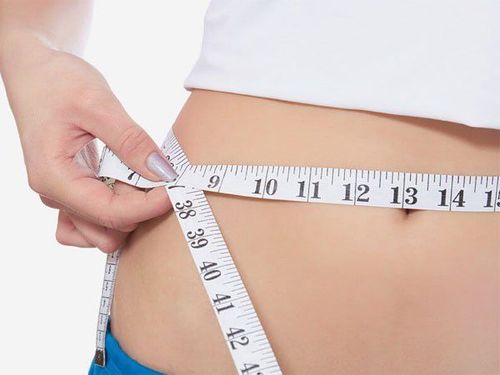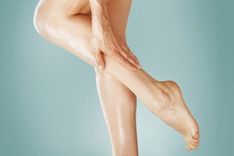After pregnancy and childbirth, most women experience changes in their body shape, often losing their pre-pregnancy figure. To regain a slimmer appearance, many women turn to postpartum abdominal binders, believing they help tighten the waist and stomach area. But should you use an abdominal binder after giving birth? Let’s explore this question in detail.
1. Benefits of postpartum abdominal binders
Abdominal binders, also known as postpartum binders, are designed to help tighten the abdominal and hip areas, potentially restoring their pre-pregnancy size or smaller (for women who had a natural delivery). For women who had a cesarean delivery, wearing a binder can help prevent incision site eventration.
Additionally, postpartum binders play a key role in improving body contour and enhancing psychological well-being. Some specific benefits include:
1.1. Enhancing women’s confidence
Postpartum, the body naturally becomes looser, and excess fat accumulates. It takes time for the muscles and skin to restore their normal tone and elasticity. Using a postpartum binder can help women feel more confident about their appearance, alleviating feelings of sadness or frustration about their bodies.
1.2. Supporting muscle recovery
After childbirth, the abdominal muscles lose their tone and require time to recover. The binder helps keep muscles and skin in place, accelerating the healing process.
1.3. Stabilizing the midsection
Binders help reduce tissue movement in the thoracic region, reducing discomfort and preventing the formation of stretch marks. This also aids in restoring skin elasticity.
1.4. Supporting cesarean wound recovery
For women who delivered via cesarean section, wearing a postpartum binder can limit painful movements such as coughing, laughing, sneezing, or getting out of bed, helping to protect the surgical wound and speed up recovery.
1.5. Achieving a slimmer look in clothing
Using a binder allows postpartum women to confidently wear pre-pregnancy clothes, eliminating the need to purchase new items while boosting their confidence.
1.6. Providing back support
Postpartum women often experience conditions such as spinal curvature or nerve inflammation due to the pressure their back endured during pregnancy. Wearing a binder can help relieve back pressure and improve posture.

2. Drawbacks of postpartum abdominal binders
While binders offer notable benefits, improper use can lead to several adverse effects on postpartum recovery and overall health.
2.1. Impact on the digestive system
Health experts warn that wearing a binder too tightly around the abdomen can cause acid reflux, pushing stomach contents upward and potentially leading to discomfort or damage to digestive organs.
This may result in heartburn, bloating, and increased symptoms in individuals with irritable bowel syndrome or incontinence. Additionally, organs like the liver, spleen, and kidneys can sustain damage from prolonged abdominal compression.
2.2. Impaired blood circulation
Postpartum recovery takes time. Wearing a tight binder too early can lead to issues such as restricted breathing, abdominal tightness, and disrupted blood circulation. This delays the body’s healing process.
Certain body parts may also experience insufficient blood flow, leading to symptoms such as dizziness, headaches, or fainting due to oxygen deprivation.
2.3. Delayed cesarean wound healing
For women who have had a cesarean section, wearing a binder too soon may slow wound healing, increasing the risk of wound separation, infection, or reopening.
2.4. Risk of lochia retention and impaired uterine involution
Wearing a binder before postpartum lochia has been expelled can cause fluid retention in the pelvic cavity, making it difficult for the uterus to contract, potentially affecting the mother’s health.
2.5. Allergic reactions and rashes
Excessive use of a binder may result in allergic reactions with erythema and pruritus at contact points. Postpartum women often sweat more, creating a breeding ground for bacteria in warm and humid conditions.
Moreover, tight binders can trap sweat, obstruct skin ventilation, and increase the risk of clogged pores. Women with sensitive skin are especially prone to these side effects.

2.6. Effects on bone structure
Prolonged use of a postpartum abdominal binder can alter thoracic skeletal structure. The compression may reduce the volume of the abdominal cavity, constrict the lungs, and make breathing more difficult. This can cause women to feel breathless, tire more quickly, and experience a decline in overall strength.
So should you use an abdominal binder after childbirth? Overall, postpartum abdominal binders can provide numerous benefits for women. However, as with most things, they come with both advantages and disadvantages. To avoid unwanted side effects or harm, it is essential to use the binder correctly and consult with a healthcare professional before starting.
3. How to use an abdominal binder correctly after childbirth
Here are some recommendations to use a postpartum abdominal binder effectively and safely:
- For vaginal delivery: Wait about 20 days to allow lochia (postpartum discharge) to completely clear before using the binder.
- For cesarean delivery: To avoid pain at the incision site, wait 1–2 months or until the wound is fully healed before starting.
- Avoid wearing the binder for extended hours continuously, especially during sleep at night.
- Gradually increase the time you wear the binder to allow your body to adapt. For example: 1 hour/day after 20 days postpartum; 2 hours/day after 3 months; and 4–6 hours/day after 6 months.
- Combine binder use with exercise and a balanced diet to accelerate fat loss.
- Choose a high-quality postpartum binder and wear it properly for the best results.
- Stop wearing the binder if you feel uncomfortable. Always clean the binder regularly to prevent infections or skin irritation.
The above are all essential details regarding postpartum abdominal binders. Women should carefully consider these points and create a plan to use the binder in a way that ensures both effectiveness and safety for their health.
Please dial HOTLINE for more information or register for an appointment HERE. Download MyVinmec app to make appointments faster and to manage your bookings easily.













